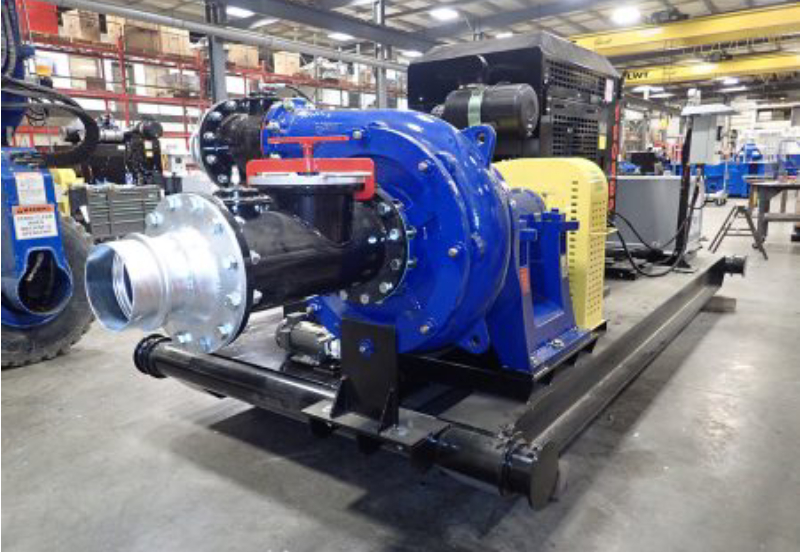Dredging booster pumps are essential in the dredging industry, designed to improve the efficiency and effectiveness of sediment removal operations. These pumps increase the hydraulic pressure in dredging systems, allowing for the transportation of materials over longer distances or to greater depths. As dredging projects often involve challenging environments, such as riverbeds and seabeds, booster pumps play a crucial role in ensuring that the dredging equipment operates at optimal levels. Understanding the functionality of these pumps is vital for professionals in marine engineering, environmental management, and construction sectors, as they contribute to successful project outcomes while minimizing operational costs and downtime.
Introduction to Dredging Booster Pump Technology
Dredging booster pump technology has advanced significantly over the years, responding to the growing demands for efficient sediment removal in various environments. These pumps are typically centrifugal in design, capable of handling large volumes of water and solids simultaneously. They are strategically placed along dredging pipelines to augment the flow and pressure of the slurry mixture, thereby overcoming resistance caused by friction in the pipeline or bends in the system. By using robust materials and innovative engineering designs, modern dredging booster pumps are engineered to withstand harsh marine conditions, ensuring reliable performance during extensive dredging operations. This technology not only enhances operational efficiency but also contributes to the sustainability of dredging practices.

Key Components of a Dredging Booster Pump
A dredging booster pump consists of several critical components that work together to facilitate efficient sediment transport. The primary component is the pump casing, which houses the impeller, the heart of the pump that generates the necessary pressure and flow. Other essential elements include the suction inlet, which allows slurry to enter the pump, and the discharge outlet, where the material exits under high pressure. Additionally, booster pumps often feature wear-resistant liners and impellers to handle abrasive materials effectively. Couplings and drives, whether diesel or electric, ensure that the pump operates smoothly and at the desired speed. Understanding these components is vital for ensuring optimal performance and longevity of the equipment in challenging environments.
How a Dredging Booster Pump Enhances Efficiency?
Dredging booster pumps enhance operational efficiency by increasing the velocity and pressure of the slurry being transported through pipelines. By strategically placing these pumps within a dredging system, operators can significantly reduce the overall power consumption and time required for sediment removal. The boost in pressure allows for longer distances to be covered without compromising flow rates, making it easier to transport dredged materials to processing sites or disposal areas. Moreover, by maintaining consistent pressure throughout the dredging operation, these pumps help to minimize wear and tear on the entire system, resulting in reduced maintenance costs and improved reliability. This efficiency translates to more successful dredging projects and better resource management.
Applications of Dredging Booster Pumps in Various Industries
Dredging booster pumps are versatile tools used across multiple industries, including construction, environmental remediation, and mining. In construction, they facilitate the removal of sediment and debris from waterways, enabling safe and efficient building projects near water bodies. In environmental remediation, these pumps assist in cleaning contaminated sediments from riverbeds and lakes, ensuring the protection of aquatic ecosystems. Additionally, in the mining industry, booster pumps are employed to manage tailings and slurry transport, improving the recovery of valuable minerals. Their adaptability to various materials, including sand, silt, and clay, makes them invaluable in different operational contexts, highlighting their significance in modern industrial practices.
Maintenance Tips for Dredging Booster Pumps
- Proper maintenance of dredging booster pumps is crucial for ensuring their longevity and efficiency.
- Regular inspections should be conducted to check for wear and tear on components such as the impeller and casing, as these parts are often subjected to abrasive materials.
- Keeping the pump clean and free from debris is essential to prevent clogs that can impede performance. Lubrication of moving parts and regular replacement of worn seals can further enhance the pump’s reliability.
- Additionally, operators should monitor the pump’s performance metrics, such as flow rate and pressure, to identify potential issues early on.
- Implementing a scheduled maintenance routine can significantly reduce downtime and operational costs associated with unexpected repairs.
Future Trends in Dredging Booster Pump Innovations
The future of dredging booster pump technology is set to witness significant innovations aimed at enhancing efficiency and sustainability. Advancements in materials science are leading to the development of more durable, wear-resistant components that can withstand harsher operational conditions. Additionally, the integration of smart technology, such as IoT sensors, allows for real-time monitoring of pump performance and condition, enabling predictive maintenance and reducing downtime. Eco-friendly designs that minimize energy consumption are also gaining traction, as industries strive to reduce their environmental impact. Moreover, research into alternative energy sources, such as solar and wind, could further revolutionize the operation of dredging booster pumps, aligning them with global sustainability goals.
Conclusion
Understanding the functionality of dredging booster pumps is essential for maximizing their effectiveness in sediment removal operations across various industries. These pumps not only enhance the efficiency and reliability of dredging projects but also contribute to environmental sustainability by facilitating the safe transport of materials. As technology continues to evolve, advancements in dredging booster pumps will likely lead to increased performance, reduced operational costs, and improved environmental outcomes. Proper maintenance and a keen awareness of potential issues can further ensure that these crucial components of dredging operations function optimally, supporting the industry’s growth and sustainability in the face of rising environmental challenges.



